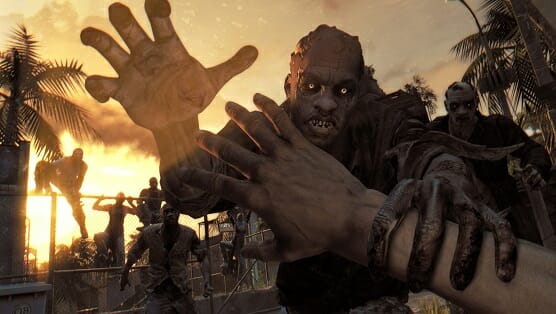Dying Light: Running Through the Mundane

How a player character moves through their game world can have an enormous impact on the way that space is perceived. A digital environment may be visually unappealing—it may consist of drably colored streets and nearly identical-looking houses—but if the process of running through a bland area feels good enough on a basic, moment-to-moment level, this can sometimes be forgiven. In Dying Light’s case this turns out to be a good thing, considering that simply controlling its protagonist manages to turn a game with a stunningly rote aesthetic into a decent enough experience.
Dying Light’s Harran (which shares a name with the Turkish village, but is fictionalized as a large, built-up metropolitan city) is a wretched place in more ways than one. Its roads are cracked and strewn with broken-down cars, trucks and buses, and its remaining houses are made up of crumbling brick and aluminum sheeting. Even the Old Town, with its coastal views and canal bisecting rows of grand apartments, towers and minarets, is coated in splashes of gore and roadside trash. And then, of course, there are the reanimated corpses who stumble around intersections and backyards, moaning for living flesh and generally degentrifying the city en masse.
All of these elements not only make up Dying Light’s setting, but represent the standardized approach to post-apocalyptic zombie media. They’re the building blocks of a genre grown bloated with years of oversaturation. Though Techland, the game’s developer, has made a limp attempt to differentiate itself by placing its first-person action in a non-Western location, there is little else about Dying Light that makes it distinct. Take protagonist Kyle Crane, the all-American white soldier man with gravel-accented voice and tortured conscience who is air-dropped into Harran during the prologue. Crane, like the survivors he joins forces with and the villain he works against, is a non-character. In place of any real personality, he assumes the archetype of Videogame Hero—quick to fall in love with the cast’s only woman, better at doing things than anyone else in the game world, conflicted when dealing with moral dilemmas but ultimately willing to do the right thing at the end of the day. The plot he stars in doesn’t fare much better, concerned as it is with corrupt government forces, last-ditch efforts to formulate a cure for the zombie virus and the forced tragedy of life in a zombified wasteland.
While tired genre conventions can still be elevated to something unique in the hands of talented writers, Dying Light immediately demonstrates its inability to do so by filling its storyline with hackneyed dialogue and melodrama. The death of a character, meant to come off as a poignant reminder of the game’s hopeless world, becomes inadvertently funny instead as Crane throws a miniature tantrum, banging his fists on a wall and stopping only a centimeter short of falling to his knees and howling at the sky in grief. The inept writing even finds space for offense, as in an early mission that tasks the player with meeting a man called Gazi (who is referred to by others as “challenged”). Gazi speaks in a lazy, childlike drawl meant to evoke an unspecified mental illness and has constructed a replacement mother for his late parent by assembling cleaning buckets and pillows into a human shape. It’s a cheap and mean-spirited bit of writing that represents one of the only deviations from what is otherwise a completely forgettable plot, relatively free of any other attempts at drawing memorable characters.
Still, if it’s possible to ignore the poor writing and nearly aggressive lack of imagination on display throughout the rest of the game, there’s enjoyment to be had in simply moving through Dying Light’s city. During a tutorial-filled prologue chapter, Crane learns how to sprint through the streets, clamber up ledges and leap over rooftops. This parkour system acts as the cornerstone of the game’s combat and mission design (there is weapon crafting and simplistic melee/shooting encounters to engage with, too) and its greatest strength. Crane runs at a great clip, fairly vaults off every ramp he barrels towards and smacks his hands onto railings, windowsills or jutting pipes with a sense of real, physical weight. The free-running and climbing is smooth and fast enough to feel natural, but requires enough mental legwork—mostly in the form of anticipating the best path to follow while traversing a city at high speeds—that there’s a constant sense of engagement to every trip through Harran’s drab streets.
-

-

-

-

-

-

-

-

-

-

-

-

-

-

-

-

-

-

-

-

-

-

-

-

-

-

-

-

-

-

-

-

-

-

-

-

-

-

-

-









































